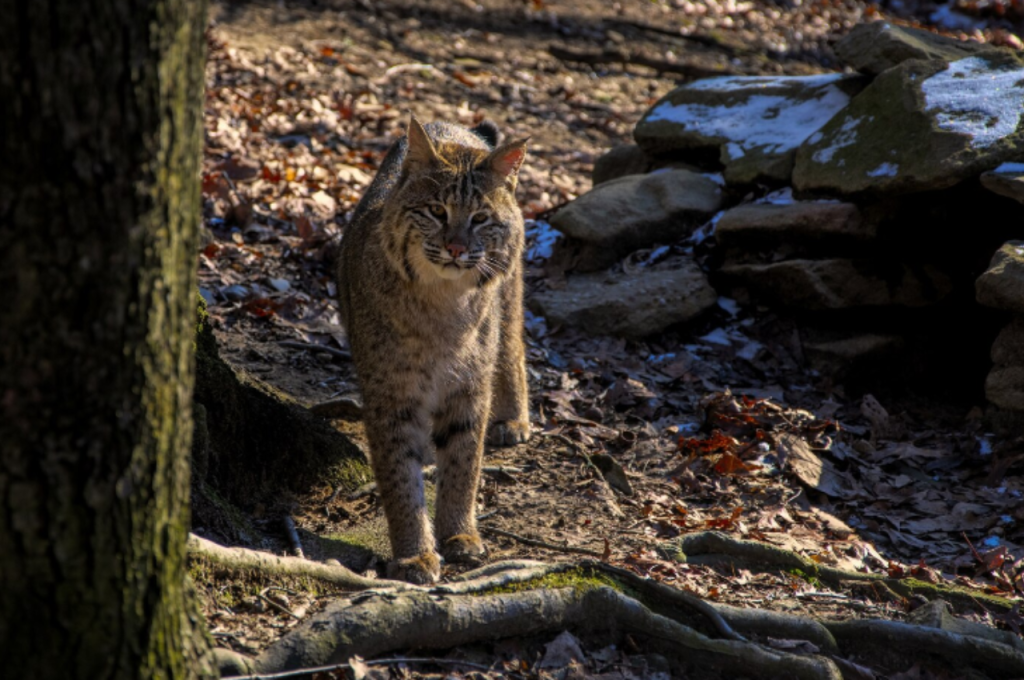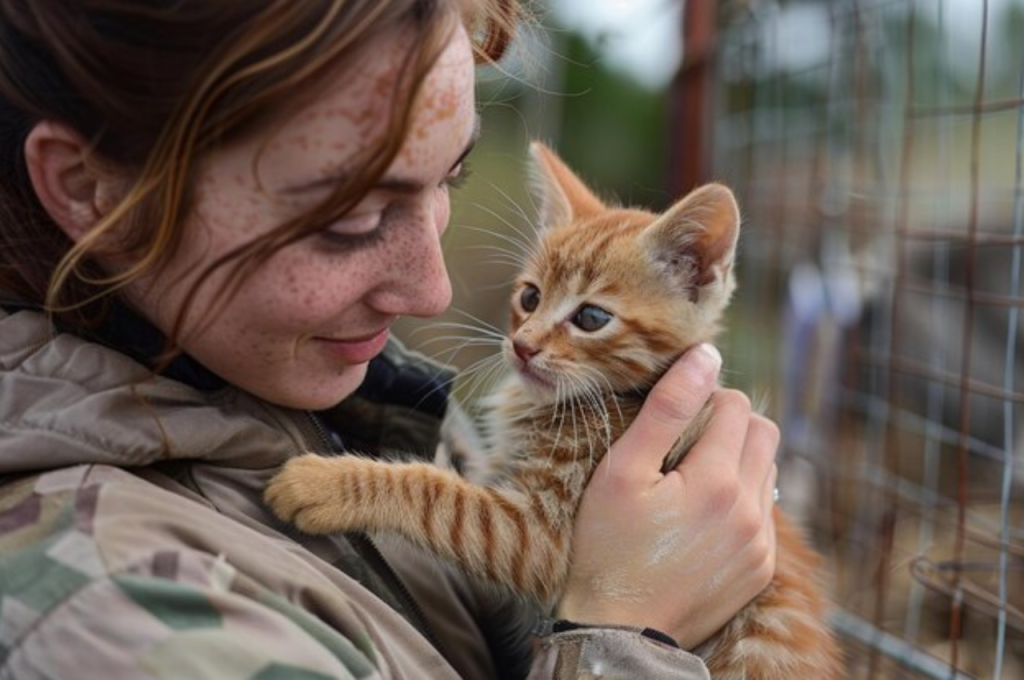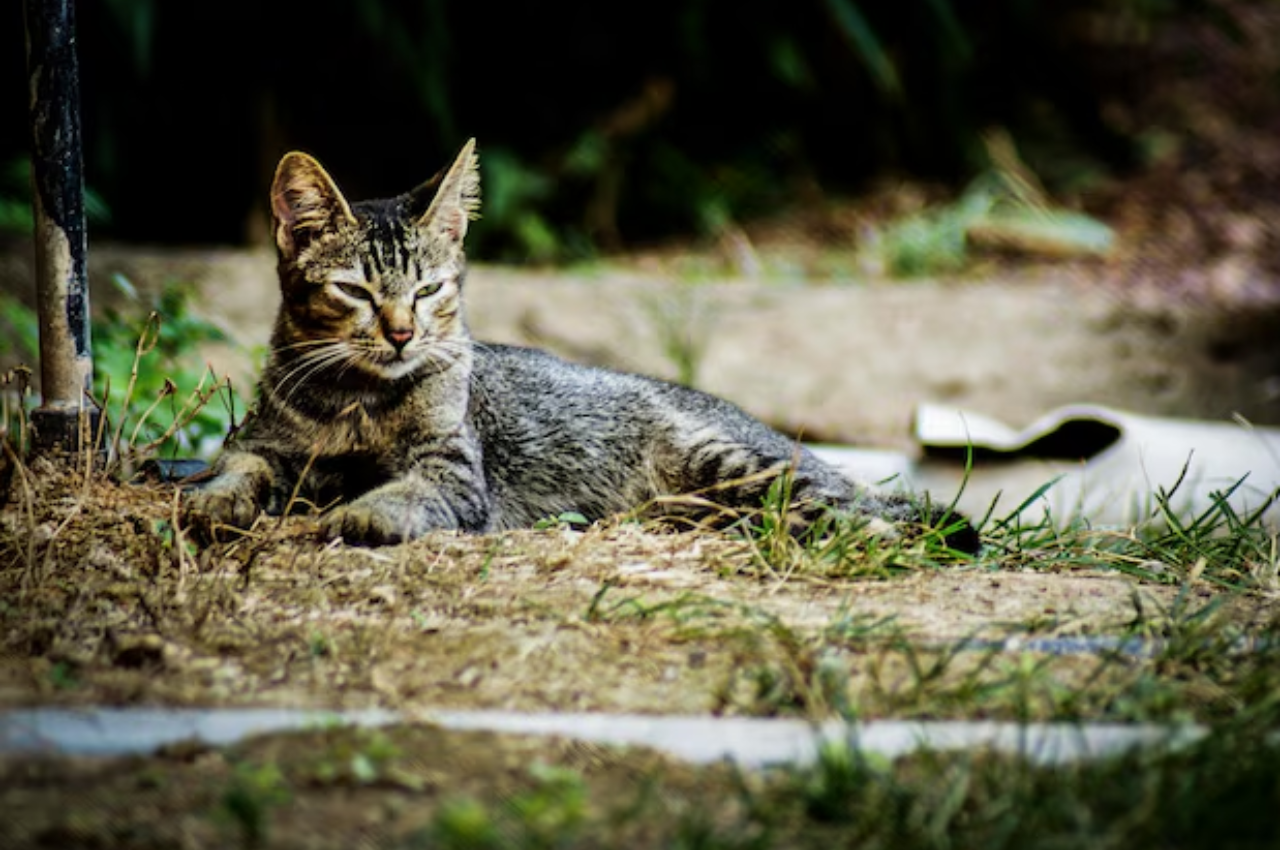If you suspect you have a wild cat, look for physical characteristics like a compact body, short tail, and prominent facial markings. Wild cats also tend to have a more aggressive and elusive nature compared to domesticated cats.
Wild cats can be distinguished from domesticated cats by their physical characteristics and behavior. Look for a compact body, short tail, and prominent facial markings. Wild cats also tend to be more aggressive and elusive, avoiding human contact. If you notice these traits in a cat, it is likely that you have encountered a wild cat. However, it is important to remember that wild cats are protected species and should not be approached or disturbed. It is best to contact local wildlife authorities for assistance in dealing with a suspected wild cat.
Wild Cats Among Us
Wild cats are majestic creatures that have captivated the human imagination for centuries. These elusive felines often go unnoticed, blending seamlessly into the landscapes where they roam. But how do you know if you have a wild cat in your midst? Let’s explore the distinct physical features and uncommon behaviors that can help identify these mysterious animals.

Distinct Physical Features
Wild cats possess distinct physical features that set them apart from domesticated felines. Their large, expressive eyes and pointed ears give them an air of alertness, while their lean, muscular bodies are built for agility and speed. Their fur is often adorned with unique patterns and markings, serving as natural camouflage in their native habitats. These features distinguish them from their domestic counterparts and are essential for their survival in the wild.
Uncommon Behaviors Observed
When observing felines, uncommon behaviors can indicate the presence of a wild cat. These behaviors may include solitary hunting, territorial markings, and a heightened sense of wariness around humans. Wild cats often exhibit a keen sense of independence and are adept at navigating their environments with precision and stealth. By recognizing these behaviors, we can gain insight into the presence of these remarkable creatures in our midst.
Feline Genetics and Wild Ancestry
Feline genetics and wild ancestry play a crucial role in understanding the behavior and physical traits of domestic cats. By examining the genetic markers and DNA of cats, we can determine if they have wild ancestry and what impact it may have on their behavior and needs.
Markers of Wild Heritage
Several markers indicate wild heritage in domestic cats. Physical traits such as ear shape, coat pattern, and body size can provide clues to a cat’s wild ancestry. Behavioral traits like high activity levels, strong hunting instincts, and territorial behavior also suggest a connection to their wild relatives.
Domestic vs. Wild Cat DNA
Domestic cat DNA differs from that of wild cats in various ways. Wild cats have a higher percentage of shared DNA with their wild ancestors, resulting in a closer resemblance to their wild counterparts in terms of physical and behavioral characteristics. Domestic cats, on the other hand, have undergone selective breeding that has led to a more diverse genetic makeup and a wider range of physical and behavioral traits.
Behavioral Clues of a Wild Feline
When it comes to identifying a wild cat, paying attention to their behavioral clues is crucial. Wild felines exhibit distinct traits that set them apart from domesticated cats. Understanding these behavioral clues can help determine if a cat has wild instincts.
Territorial Instincts
Wild cats are fiercely territorial, marking their territory with urine and scents. They exhibit defensive behaviors and are protective of their territory, often displaying aggression towards intruders.
Hunting Prowess
Wild felines possess exceptional hunting skills. They are skilled hunters, displaying stealth and agility in their hunting techniques. Their predatory instincts are finely tuned, enabling them to stalk and capture prey with precision.
Physical Traits of Wildness
Identifying a wild cat involves noting key physical traits: sharp retractable claws, keen eyesight, and a muscular build. Their pointed ears and long whiskers aid in hunting, while their agile movements and stealthy nature are distinctive characteristics.
Coat Patterns and Textures
Wild cats often have distinct coat patterns and textures. These may include spots, stripes, or swirls on their fur. The texture of their coat can range from soft and dense to short and sleek.
Ear Tufts and Tail Signals
Wild cats may have ear tufts or tufted ears that are pointed. Their tails can serve as signals of their wild nature. A bushy tail may indicate a wild lineage. Wild cats exhibit distinct coat patterns and textures. They may have spots, stripes, or swirls. The coat can be soft and dense or short and sleek. Some wild cats have ear tufts and pointed ears. The tail can also be a signal of their wild nature, with a bushy tail hinting at a wild lineage.
Vocalizations and Communication
To determine if you have a wild cat, observe its vocalizations and communication. Wild cats tend to make different sounds compared to domestic cats, including growls, hisses, and intense yowling. Their communication style is more aggressive and territorial, indicating a potentially wild nature.
Unique Calls and Growls
Vocalizations are an essential part of communication for wild cats. Each species has its unique calls and growls that they use to express their emotions. For example, if you hear a loud, low-pitched growl, it could be a warning sign that a wild cat is nearby. Similarly, a high-pitched sound is an indication of a cat’s excitement or fear. Wild cats make a variety of unique calls, including purring, hissing, chuffing, and meowing. Purring is a sign of contentment, while hissing and growling indicate aggression or fear. Chuffing is a friendly greeting sound that wild cats use to communicate with each other.

Body Language and Posture
Body language and posture are also crucial indicators of a wild cat’s behavior. When a wild cat feels threatened, it will arch its back, puff up its fur, and make itself appear more prominent. This behavior is intended to intimidate the perceived threat and make it back down. When a wild cat is relaxed, it will have a low, relaxed posture with its tail down. However, when a wild cat is hunting, it will have a more focused, intense posture, with its ears forward and its tail twitching.
In conclusion, understanding wild cat vocalizations and body language can help you identify if a wild cat is nearby. If you hear unique calls and growls or observe specific body language and posture, it’s essential to take precautions and avoid any potential danger. Remember, wild cats are unpredictable, and it’s always better to be safe than sorry.
Wild Cat Habitats and Territories
Wild cats establish their habitats and territories in diverse environments, including forests, grasslands, and mountains. Identifying wild cats involves recognizing their physical features, such as tufted ears, long tails, and keen eyesight. Additionally, monitoring their behavior, such as solitary hunting and territorial marking, can indicate the presence of a wild cat.
Preferred Natural Environments
- Wild cats thrive in diverse ecosystems, including forests, grasslands, and deserts.
- They are well-adapted to various climates and terrains, from snow-covered mountains to hot savannas.
- Wild cats seek dense vegetation for hunting and sheltered spots for resting.
Adaptation to Human Proximity
- Wild cats exhibit flexibility in sharing habitats with humans, often adapting to urban areas.
- They may utilize human structures for shelter and prey on small animals in human settlements.
- Human presence can impact wild cat behavior, influencing their activity patterns and territorial ranges.
Interactions with Other Animals
Determining whether you have a wild cat involves observing its behavior and interactions with other animals. Wild cats typically exhibit solitary behavior and may show aggression towards other animals, while domestic cats are more sociable and tolerant of other pets. Pay attention to their hunting instincts and territorial behavior to identify if you have a wild cat.
Predator and Prey Dynamics
Wild cats are skilled hunters and have a predatory instinct that makes them lethal to small animals. They are known to hunt and kill birds, rodents, and other small mammals. If you notice your cat stalking and pouncing on small prey, it may be an indication that you have a wild cat.
Social Structures and Solitude
Wild cats are solitary animals and prefer to live and hunt alone. If your cat displays anti-social behavior and avoids human interaction, it could be a sign that it has a wild heritage. However, domesticated cats can also exhibit solitary behavior, so it’s important to look at other signs as well. When it comes to interactions with other animals, wild cats have a unique predator-prey relationship. They are skilled hunters and can take down animals larger than themselves.
However, they also have to be wary of larger predators in their environment. If your cat displays aggressive behavior towards other animals, it may be an indication that it has a wild heritage. Moreover, wild cats are known for their territorial behavior. They mark their territory with urine and feces and defend it from other animals. If your cat is excessively territorial, it could be a sign that it has a wild heritage.
In conclusion, understanding the behavior of wild cats can help you determine if your cat has a wild heritage. By observing its interactions with other animals, you can gain insight into its predatory instincts and social behavior. If you suspect that your cat has a wild heritage, it’s important to provide it with the proper care and environment to ensure its wellbeing.
Assessing The wild Cat Within
If you’re wondering whether or not you have a wild cat, there are a few things to look out for. Firstly, it’s important to understand that domestic cats can display some wild traits, such as hunting instincts and a desire for freedom. However, there are certain characteristics that are more commonly associated with wild cats.
Personal Stories and Encounters
Many people who have encountered wild cats have described feeling a sense of awe and fear. One such encounter was with a friend who had taken in a stray cat that turned out to be a wild hybrid. Despite being a loving and affectionate pet, the cat had a wild streak that could be triggered by certain stimuli, such as sudden movements or loud noises.
Another personal story involved a family who had adopted a cat from a shelter, only to discover that it was a hybrid between a domestic cat and a wildcat. This cat had a strong hunting instinct and would often bring home small animals, such as birds and mice.
Expert Insights on Domestic Wild Hybrids
According to experts, domestic-wild hybrids can display a range of behaviors that are characteristic of both wild and domestic cats. These hybrids are typically larger and more muscular than domestic cats, with longer legs and larger paws.
| Wild Cat Traits | Domestic Cat Traits |
| Longer legs | Shorter legs |
| Larger paws | Smaller paws |
| Strong hunting instinct | Variable hunting instinct |
However, it’s important to note that not all hybrids will display these traits, and that behavior can vary depending on the individual cat’s genetic makeup and upbringing.
In conclusion, assessing whether or not you have a wild cat can be challenging. While certain traits, such as a strong hunting instinct and larger size, can indicate a wild cat heritage, it’s important to understand that behavior can vary widely between individual cats. If you’re unsure about your cat’s origins or behavior, it’s always best to consult with a veterinarian or animal behaviorist.
Conservation and Ethical Considerations
Identifying a wild cat involves observing its physical characteristics, behavior, and habitat. Conservation efforts prioritize protecting these majestic creatures while considering ethical implications. It is crucial to respect their natural environment and support initiatives that promote their well-being.
Protecting wild Cat Populations
- Conservation and ethical considerations are vital in protecting wild cat populations.
- Preserving their natural habitats and preventing illegal trade are key priorities.
Responsibilities of Wild Cat Ownership
- Owning a wild cat comes with significant responsibilities.
- Proper care, legal adherence, and ethical treatment are essential.
Adopting and Caring for a Wild Cat
Identifying a wild cat can be challenging, but there are a few signs to look out for. Wild cats tend to have a more muscular build, larger ears, and distinctive markings. Additionally, their behavior may differ from domestic cats, displaying more aggression and a strong hunting instinct.

Preparation and Precautions
Adopting a wild cat can be a rewarding experience, but it is important to prepare yourself and your home for their arrival. First, make sure that owning a wild cat is legal in your state or country. Then, create a safe and secure enclosure for your cat that meets their needs for space and stimulation. It is also crucial to research the specific breed of wild cat you are interested in, as each has their own unique characteristics and care requirements.
Healthcare and Nutrition
Wild cats require specialized healthcare and nutrition to ensure their well-being. Regular visits to a veterinarian who specializes in exotic animals are necessary to prevent and treat any health issues. Proper nutrition is also crucial, as wild cats have specific dietary requirements that differ from domestic cats. A diet rich in protein and moisture is essential for their health, and supplements may be necessary to ensure they receive all necessary nutrients.
Adopting and caring for a wild cat requires dedication, preparation, and specialized knowledge. By taking the necessary precautions and providing proper healthcare and nutrition, you can ensure that your wild cat lives a happy and healthy life in your care.
Conclusion
Identifying whether you have a wild cat requires careful observation and understanding of their behavior and physical traits. Look for signs such as unusual markings, aggressive behavior, and a preference for hunting. By considering these factors, you can determine if your cat exhibits wild characteristics.
Remember, it’s important to provide a safe and appropriate environment for these cats, as their wild nature may require special care.
